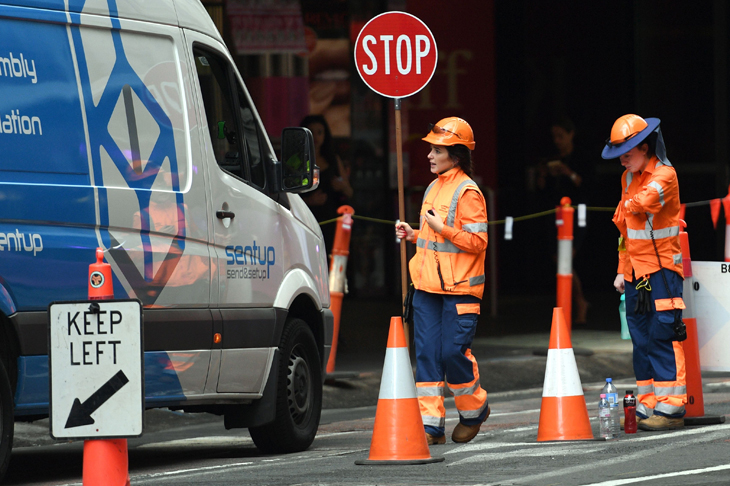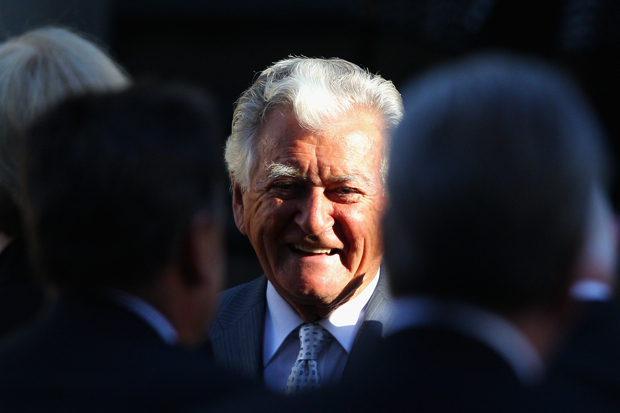At the May federal election, Labor’s primary vote in the lower house was just 33.3 per cent – its worst result in more than a century – and it fell below 30 per cent in NSW, Queensland and WA. Yet, the party shows little appetite for examining causes beyond its poor campaign. On July 18 the ALP’s National Executive announced a review, chaired by former South Australian premier Jay Weatherill and former federal minster Craig Emerson, saying it would hold a ‘review of the party’s 2019 Federal election campaign [italics added]’, to ‘identify areas that can be improved to return Labor to Government at the next Federal Election.’ This announcement gives the impression that the National Executive is not going to look at policies or at party organisation.
Certainly, powerful people do not want a review of the policies on which the election was fought. On 25 September, Brendan O’Connor, shadow minister for employment, industry, science, small and family business said that in ‘searching for the elusive causes of defeat’ it would be ‘absurd’ to abandon ‘proposals which had support and are critical to this country’s future,’ when the election result was so close that there was ‘just a kick in it.’ But as shadow minister for the environment and climate change Mark Butler put it, ‘when you get your backside handed to you by Fozzie Bear and Kermit the Frog, it’s time for some serious reflection.’
The review will be delivered in November and the National Executive has yet to decide whether the report will be made public but even if it is, we are unlikely to learn the underlying causes of Labor’s dismal election result because this is the review you have when you’re not having a review.
In 1996, the National Executive reviewed the defeat of the Keating Government – whose ill-disciplined election campaign was the prelude to eleven years in Opposition — in similar terms but there are clear differences between this review and the party’s most recent reviews of elections in 1996, 2002 and 2010:
- The 1996 review committee received submissions on its home page, and spoke with members in all state and territory capitals.
- The 2002 Hawke Wran review received 669 written submissions, and party member forums were held in all states and territories.
- The 2010 Bracks, Carr and Faulkner review received 800 written submissions and over 3,500 on its website, and party membership forums were held in every state and territory.
There was no indication that this review would hold meetings with party members, and only three weeks were allocated for submissions to delivered. The perfunctory instructions for hearing from, and meeting with party members reinforced the appearance of a National Executive that has already made up its mind on how to return Labor to government in 2022. This notwithstanding that party members were informed by email (in NSW on 13 September) that panellists were ‘travelling the country to gain feedback from state and territory members.’
As I recount in my just published book Labor’s Forgotten People: The Triumph of Identity Politics – the 2002 and 2010 reviews dealt with organisational and policy issues that this review ignores, including the unions’ dominance within the party, and the influence of so-called ‘advocacy groups’ on Labor’s policies.
The 2002 review saw the decline in Labor’s primary vote to 37.8 per cent as the biggest challenge facing the party. It reported that Labor had failed to retain the support of skilled and semi-skilled blue-collar workers and women from lower socio-economic backgrounds. It recommended a minor reduction in union representation at state conferences – from a 60:40 ratio of union members (selected by the union’s senior officials) to party members, down to 50:50 – to reflect the ‘equal partnership’ between the party and union movement.
The 2010 review reported on a crisis in membership, which in part reflected changes taking place in Western Europe, where social democratic parties’ support base had been ‘devoured by Green or left-leaning parties on the one hand and right-wing populist parties with a largely anti immigrant agenda on the other.’ Its recommendations included developing a strategy targeting voters lost to the Greens, and conducting research on voters attracted to the Greens. It also recommended giving members a direct vote for national conference delegates, and ‘primaries’ for members in pre-selections for non-held and open House of Representative seats. Faulkner went further in a later speech proposing ‘community preselections’ for the House of Representatives, with equal weighting for members and non-members who ‘declare’ their support for Labor – saying ‘activists’ should never be outside the Labor movement.
Yet the threat to Labor comes not from the Greens — most of whose voters live in a few inner capital city electorates — or from One Nation, if for no other reason than it has never mounted a national campaign. The real threat comes from a federal parliamentary Liberal leader like John Howard who appealed directly to socially-conservative Australians over the head of the mainstream media, including large swathes of traditional Labor voters. It’s early days but Scott Morrison may prove to be such a leader – albeit more pragmatic, with his own political instincts and an effective style of campaigning.
Changing the party’s rules to transfer power from senior union officials’ to party members may seem reasonable but direct election by the party’s membership of the delegates to the national conference and candidates for House of Representative seats would effectively hand control of the party to the left – witness its success in ballots for the federal parliamentary leadership and the party president. In all likelihood, community pre-selections would lead to a takeover of the party by an organised minority of far-left activists, as happened with UK Labour.
At the moment the election review risks being little more than ‘window dressing,’ but if it strays into organisation and policy, it would do well to return to the 2002 review’s concern with regaining the loyalty of Labor’s traditional working-class supporters and forget about the 2010 review’s attempts to win voters from the Greens and proposals for direct member elections; embracing that agenda could signal the end of Labor as a party that can win government in its own right.
Michael Thompson is the author of Labor’s Forgotten People: The Triumph of Identity Politics, Connor Court (2019) and Labor Without Class: The Gentrification of the ALP, Pluto Press (1999.)
Got something to add? Join the discussion and comment below.
Get 10 issues for just $10
Subscribe to The Spectator Australia today for the next 10 magazine issues, plus full online access, for just $10.
You might disagree with half of it, but you’ll enjoy reading all of it. Try your first month for free, then just $2 a week for the remainder of your first year.














Comments
Don't miss out
Join the conversation with other Spectator Australia readers. Subscribe to leave a comment.
SUBSCRIBEAlready a subscriber? Log in